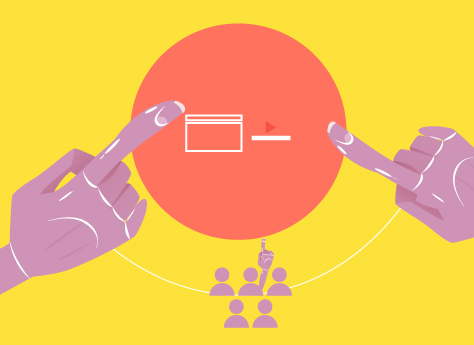1. Support Everything with Research
For UX designers, the discipline of research permeates the entirety of the design process. You should undoubtedly bring your research findings into your pitch.
Going into a pitch, be sure you’ve already researched the industry that is your client’s domain, including their biggest competitors and innovators in that domain. Study the competitors who are the major players to understand the unique elements or processes that differentiate them from one another. Also, be sure that you’re aware of the newest trends—not only in your client’s industry, but in the world of UX design as well. You should incorporate these into your design pitch, providing examples that bring contemporary flair to your presentation and your project as a whole.
Being prepared with plenty of research is the single most effective way to elevate your pitch. Research enables you to back up your own claims with hard facts, and you’ll be better prepared to answer your client’s questions and make relevant connections to the information they provide.
2. Show Your Thought Process
As a UX designer, it’s all too easy to overlook the more arcane aspects of the design process when you’re pitching to a client. But your clients are probably not UX designers. That’s why they need your help understanding your though process, as depicted in Figure 1. But don’t construe this as your not needing to present your design process at all. The first rule of pitching is: explain your design process to clients.

There are three benefits of explaining your design process to your clients, as follows:
- It gives your client more context into your decision-making process. Your client gets an opportunity to see how you choose to tackle issues as a UX designer. Plus, it gives structure to information that would otherwise probably be confusing to your clients, who aren’t designers.
- It demonstrates that you back up your decisions with evidence. The client gets to see that you’re results oriented and can piece together how you’ve worked—from defining the problem to creating a solution. It also demonstrates that you’ve done your homework and are fully invested in solving the problem that the client has presented.
- It helps build rapport with your client. Showing your knowledge and prowess in not only design but the entire design process establishes you as the expert in the client conversation. Being confident in your pitch and backing up your design solutions with your rationales for your decisions demonstrates that you’ve followed a formal process in creating the design you’re pitching.
So whether you’ve conducted a heuristic analysis or created some low-fidelity wireframes, walk your client through how and why you’ve arrived at your conclusions. This can have a far greater impact than you might have expected, even reinforcing your reputation as an expert in your field.



